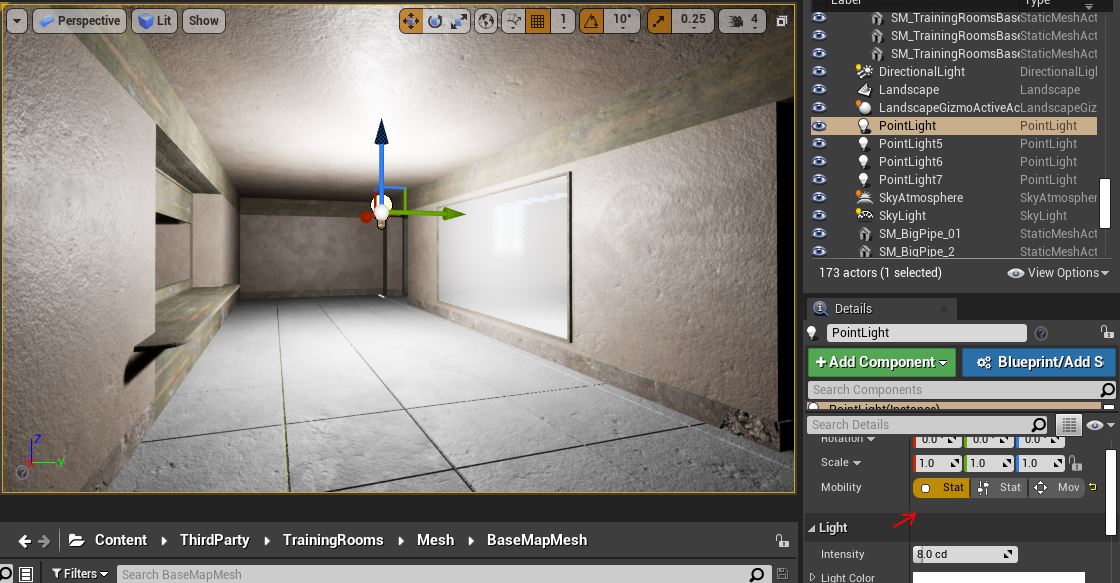Difference between revisions of "JohnnyEnglish tutorial Working with UE4 Improved lighting"
| Line 5: | Line 5: | ||
My process is to add static, low intensity, not white (some variations close to white are best) lights around the map to first even out any over dark places and secondly to highlight any areas where artificial lighting will increase the intensity. | My process is to add static, low intensity, not white (some variations close to white are best) lights around the map to first even out any over dark places and secondly to highlight any areas where artificial lighting will increase the intensity. | ||
| + | [[File:Light02.JPG]] | ||
| + | ==Adding reflections== | ||
| − | + | So that the reflective and highlights of the materials in your map can be fully calculated, you will need to add one or more '''Sphere Reflection Captures''' to your maps. | |
| + | |||
| + | I tend to add these, per room or per area, try not to overlap '''Sphere Reflection Captures''', adjust the radius as appropriate. | ||
Revision as of 05:24, 13 August 2021
So far we've only added very basic external lighting. The next stage is to start painting the details into our map with lights.
Lighting is a very personal subject, the object is to light the scene in a realistic manner while enhancing play.
My process is to add static, low intensity, not white (some variations close to white are best) lights around the map to first even out any over dark places and secondly to highlight any areas where artificial lighting will increase the intensity.
Adding reflections
So that the reflective and highlights of the materials in your map can be fully calculated, you will need to add one or more Sphere Reflection Captures to your maps.
I tend to add these, per room or per area, try not to overlap Sphere Reflection Captures, adjust the radius as appropriate.
